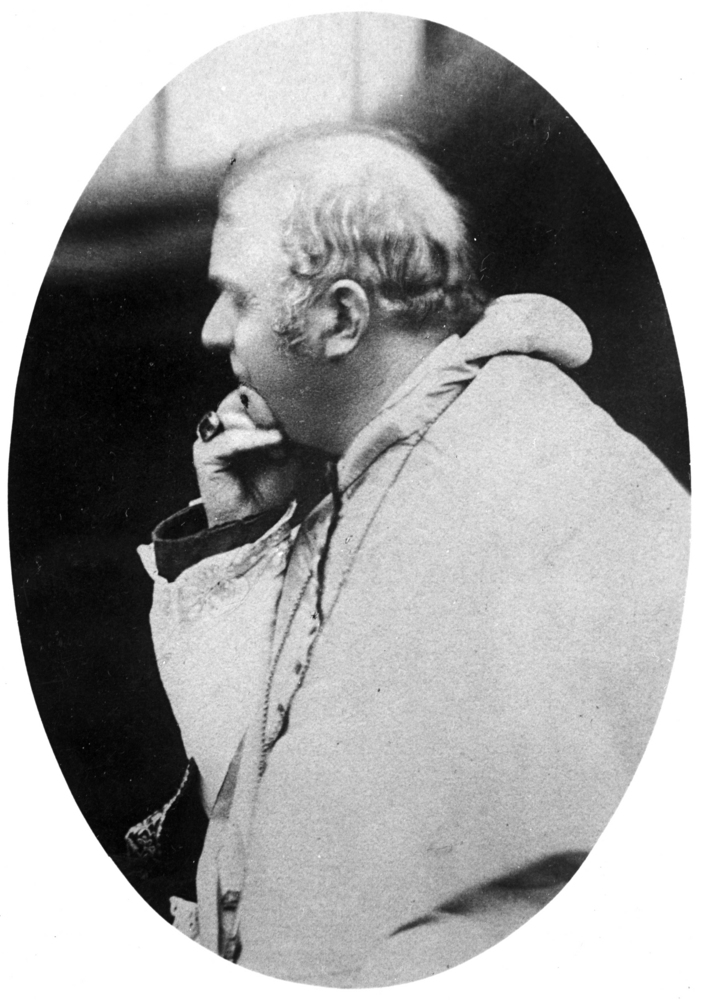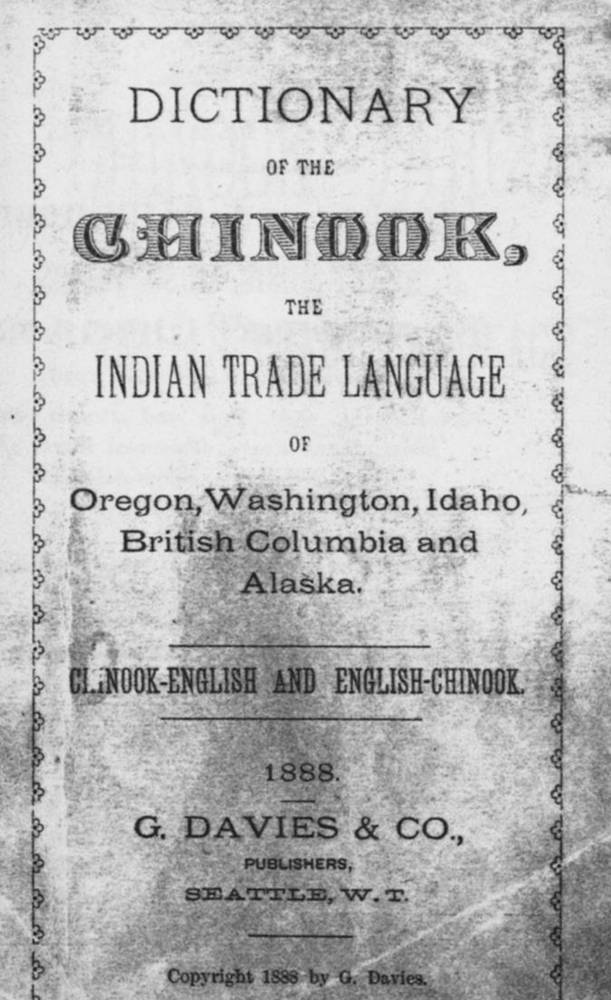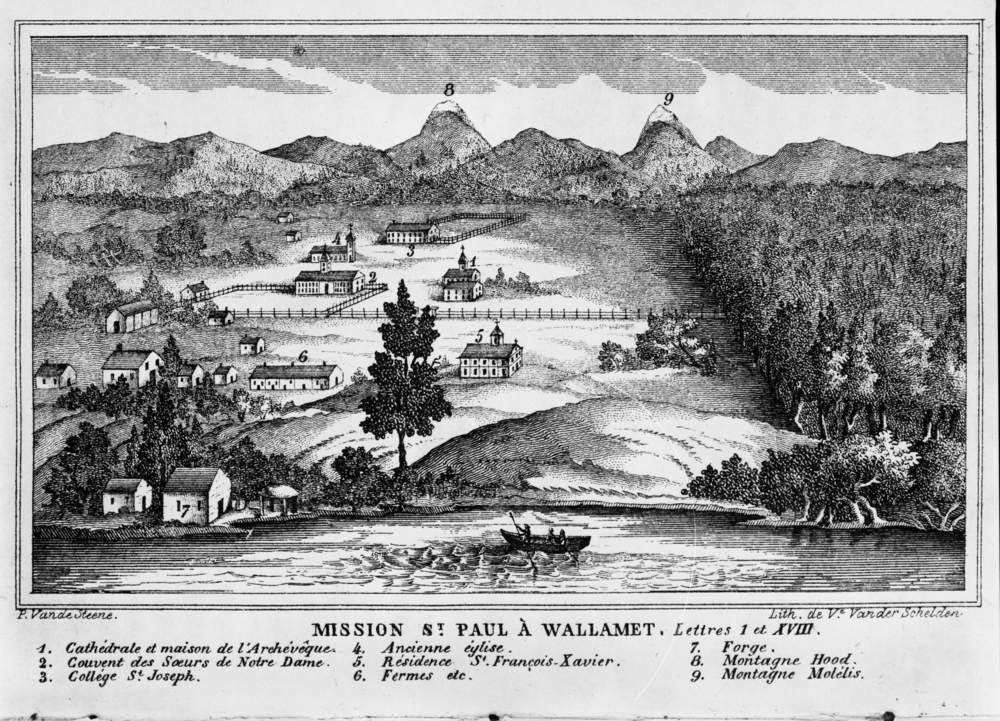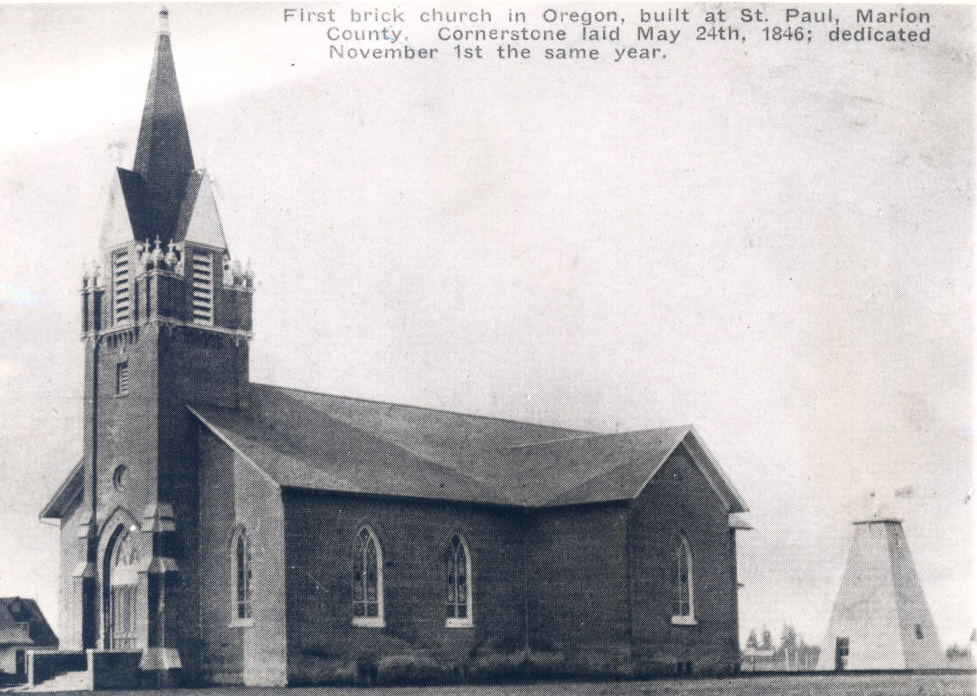Modeste Demers answered the missionary call to Oregon in 1838, just two years after his ordination as a Roman Catholic priest in his native Quebec. In July 1838, Demers departed his Red River (Manitoba) post with the newly appointed Vicar General François Norbert Blanchet on the annual Hudson’s Bay Company brigade, arriving the following November at Fort Vancouver. Together, Blanchet and Demers established the first Catholic missions in the Pacific Northwest.
Demers devoted much of his time and energy to evangelizing Native Americans throughout the Oregon Country, which at that time covered a wide territory encompassing the states of Washington, Oregon, Idaho, and parts of British Columbia, Montana, and Wyoming. He traveled as far north as Alaska and was the first Catholic priest known to many Pacific Northwest Native tribes. Demers and Blanchet based their early missions at fur trade posts and settlements where they could reach local Indians and others who traveled to see the “blackrobes,” a term referring to the priests' clerical garb, which they wore at all times as a mark of distinction.
Demers’s skill as a linguist allowed him to quickly master Chinook Jargon, a trade language understood by most of the region’s Native tribes, and several other Native languages. Within six weeks after arriving in Oregon, Demers could lead religious services in Jargon, and within the first year he produced a dictionary and missionary handbook, consisting of prayers, hymns, and a catechism. All of the region’s Catholic missionaries used these essential tools to communicate with the Indigenous population.
In 1844, Blanchet called Demers to Oregon City (in present-day Clackamas County) to serve as vicar general and oversee missions during Blanchet’s absence. The field had grown to nine missions, eleven churches and chapels, and two schools, all staffed by fifteen priests and six women religious. During Demers’s tenure as vicar general (1844-1847), churches in Oregon City and St. Paul were completed, and the boundary dispute between the United States and Great Britain reached resolution. Demers’s native French had served him well with the fur traders who first settled the area, now his facility with English was called upon to deal with the next wave of settlers coming in to the new U.S. territory.
F.N. Blanchet returned in 1847 as Archbishop of Oregon City. The Oregon City church became his cathedral; there he consecrated Demers Bishop of Vancouver Island, the sole clergyman serving what is now British Columbia. Demers spent much of his remaining years traveling to Canada, Europe, South American, and the east coast of the United States to raise funds for his cash-poor diocese and to seek additional personnel. In 1866, he attended the Second Plenary Council of Baltimore, and, after a brief stay in Victoria (Vancouver Island), traveled to Rome for the Vatican Council of 1869-1870. His travels brought great benefits to his diocese but left him exhausted and infirm; he died at home in Victoria on July 28, 1871.
-
![]()
Bishop Modeste Demers, 1838.
Oreg. Hist. Soc. Research Lib., bb004280
-
![(l to r): Bishop Magloire Blanchet, Archibishop Norbert Blanchet, Bishop M. Demers]()
Founders of the Catholic Church in the Northwest, 1838.
(l to r): Bishop Magloire Blanchet, Archibishop Norbert Blanchet, Bishop M. Demers Oreg. Hist. Soc. Research Lib., bb002271
Related Entries
-
![Chinook Jargon (Chinuk Wawa)]()
Chinook Jargon (Chinuk Wawa)
According to our best information, the name "Chinook" (pronounced with …
-
![Francois Blanchet (1795-1883)]()
Francois Blanchet (1795-1883)
François Norbert Blanchet arrived in Oregon in November 1838 as …
-
![Sisters of Notre Dame de Namur]()
Sisters of Notre Dame de Namur
Early in January 1844, six Sisters of Notre Dame de Namur (SNDdeN) depa…
-
![Sisters of the Holy Names of Jesus and Mary]()
Sisters of the Holy Names of Jesus and Mary
The Holy Names of Jesus and Mary is a Roman Catholic women's religious …
-
![St. Paul Cemetery]()
St. Paul Cemetery
The town of St. Paul, established in 1839, was the first Catholic missi…
-
![St. Paul Roman Catholic Church]()
St. Paul Roman Catholic Church
The St. Paul Roman Catholic Church was established in the mid-Willamett…
Related Historical Records
Map This on the Oregon History WayFinder
The Oregon History Wayfinder is an interactive map that identifies significant places, people, and events in Oregon history.
Further Reading
Blanchet, Francis Norbert. Historical Sketches of the Catholic Church in Oregon. Reprint ed., edited by Edward J. Kowrach. Fairfield, WA: Ye Galleon, 1983.
Chinuk Wawa Dictionary Committee. Chinuk Wawa as Our Elders Teach Us to Speak It. Grand Ronde, Oregon: Confederated Tribes of Grand Ronde. Distributed by University of Washington Press, Seattle, 2012.
Demers, Modeste. J.M.J. Chinook Dictionary, Catechism, Prayers and Hymns. Composed in 1838 & 1839 by Rt. Rev. Modeste Demers. Revised, corrected and completed, in 1867 by most Rev. F. N. Blanchet. With modifications and additions by Rev. L. N. St. Onge, Missionary among the Yakamas and other Indian Tribes. Montreal: 1871.
Landerholm, Carl, trans. Notices and Voyages of the Famed Quebec Mission to the Pacific Northwest. Portland: Oregon Historical Society, 1956.
Morice, Adrian G. History of the Catholic Church in Western Canada. 2 vols. Toronto: Musson Book Co., 1910.
Nichols, M. L. The Mantle of Elias: the Story of Fathers Blanchet and Demers in Early Oregon. Portland: 1941.








